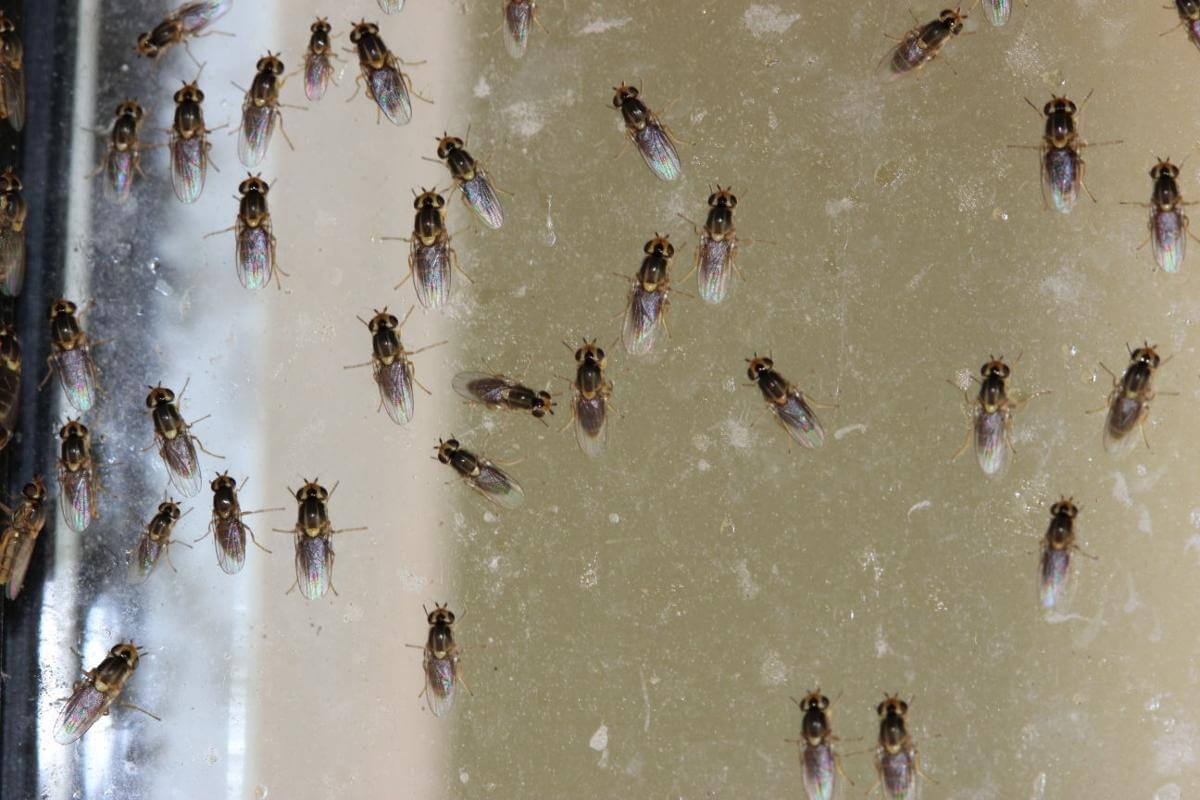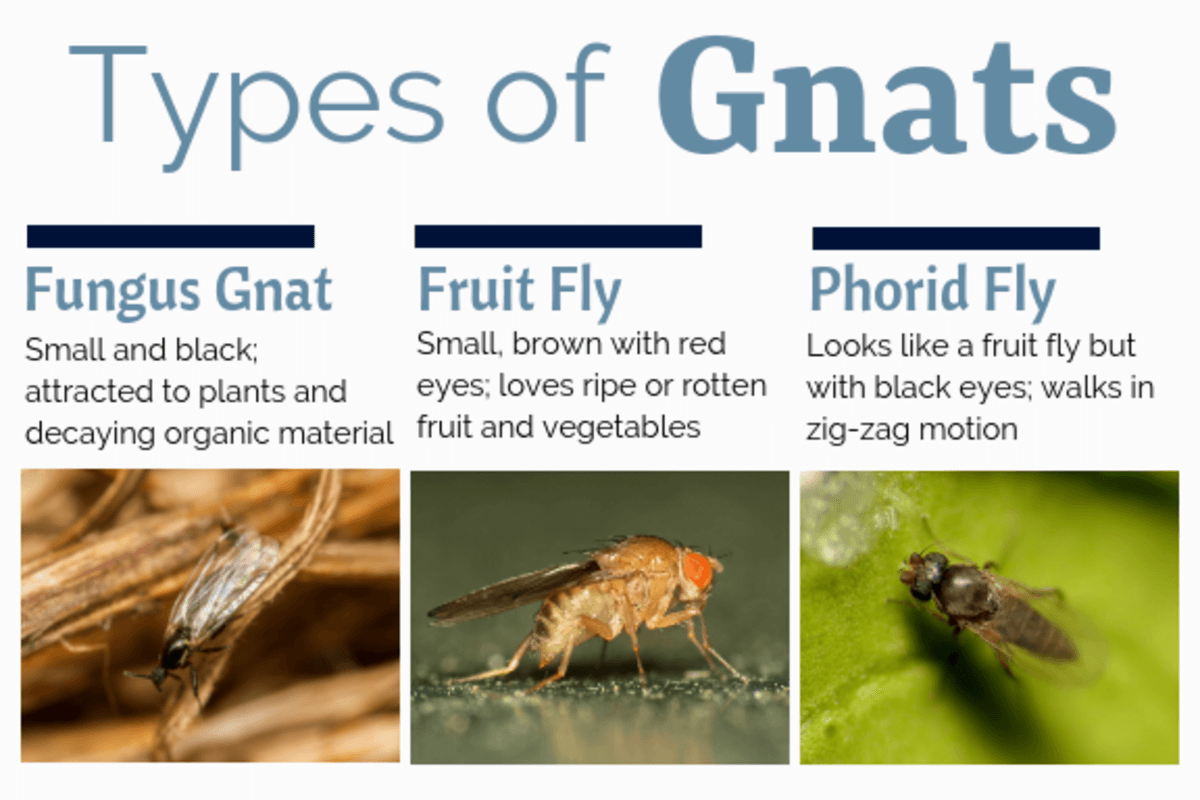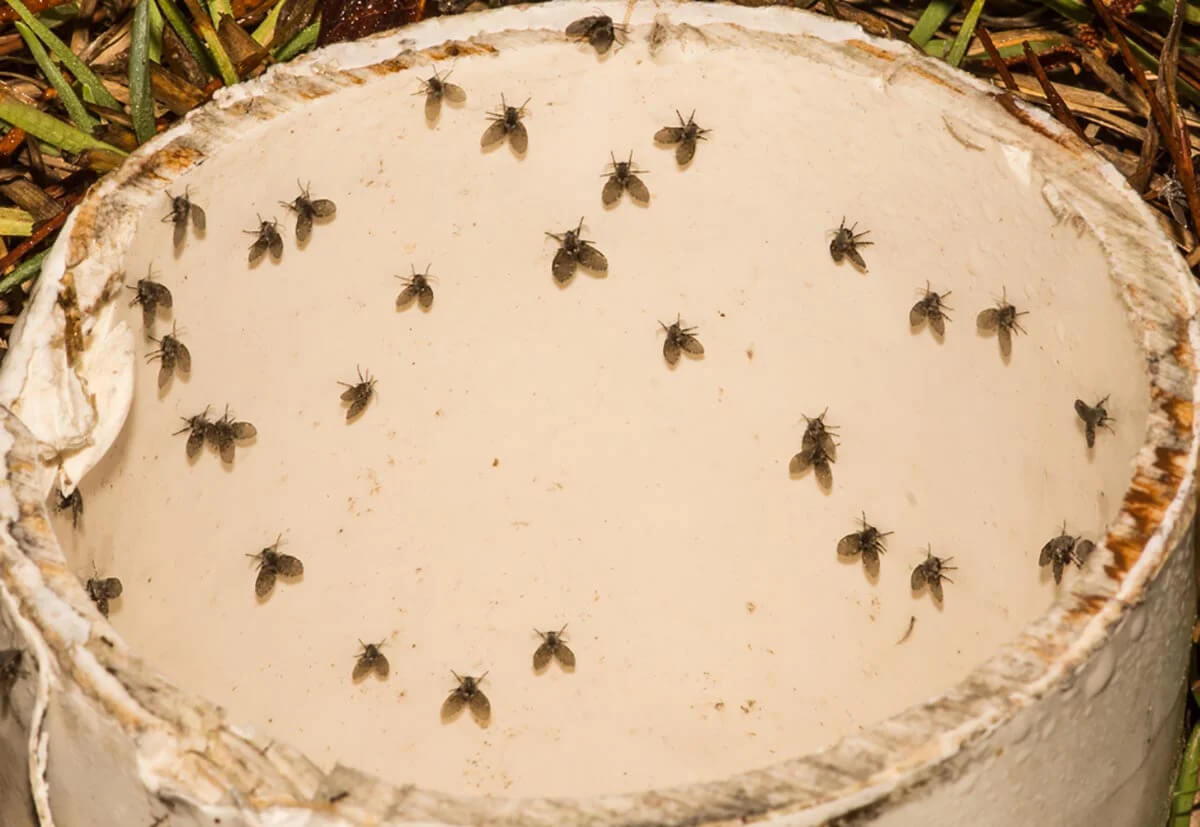How to Get Rid of Gnats?

Gnats, those tiny, seemingly harmless insects, can quickly transform your living space into an annoying battleground. They hover around your face, invade your kitchen, and seem to pop up out of nowhere. In this comprehensive guide, we aim to shed light on the gnat problem, underscore the importance of swift action, and promise you a detailed roadmap for eradicating these pests from your life.
Brief Overview of the Gnat Problem
Gnats, scientifically known as Nematocera, are a family of small, flying insects that resemble mosquitoes. While they don't pose the same health risks as mosquitoes, their constant presence can be a nuisance. They are attracted to moisture, decaying organic matter, and, in some cases, overripe fruits. Understanding the characteristics of these insects is the first step in effectively dealing with them.
Importance of Addressing Gnat Infestations Promptly
The significance of addressing gnat infestations promptly cannot be overstated. Gnats reproduce rapidly, and a small annoyance can escalate into a full-blown infestation if left unchecked. Beyond the irritation they cause, gnats can contaminate food, multiply in damp environments, and even pose potential health risks. Taking swift action is crucial to prevent these issues from worsening.
Promise of a Comprehensive Guide to Eliminate Gnats
Now, here's the good news: you're not alone in this battle. Our comprehensive guide is here to equip you with the knowledge and strategies needed to eliminate gnats effectively. From understanding their behavior to exploring DIY remedies and considering professional services, we've got you covered. By the end of this guide, you'll have the tools to reclaim your space from these pesky invaders.
So, gear up, and let's dive into the intricacies of gnat control. We promise insights, actionable tips, and a holistic approach to ensure you bid farewell to gnats once and for all.

Understanding Gnats
Identification of Different Gnat Species
Gnats are small flying insects belonging to the order Diptera. While the term "gnat" is often used broadly, it encompasses various species, each with unique characteristics. Common gnat species include fungus gnats (Sciaridae family), fruit flies (Drosophilidae family), and biting gnats (Ceratopogonidae family). Identification involves examining their size, color, wing structure, and feeding habits.
Behavior and Breeding Habits
Gnats exhibit diverse behaviors and breeding habits depending on their species. Fungus gnats, for example, are attracted to decaying organic matter and thrive in moist environments. Fruit flies are commonly found around ripe fruits and vegetables, attracted to fermenting sugars. Biting gnats, also known as midges or no-see-ums, often breed in aquatic habitats. Understanding these behaviors helps in implementing effective control measures and prevention strategies.
Common Areas Where Gnats Thrive
Gnats are adaptable insects, and their habitats vary based on species. Fungus gnats are commonly found in soil-rich environments, especially in overwatered houseplants. Fruit flies thrive in kitchens and areas with exposed food. Biting gnats are prevalent near bodies of water, such as lakes or ponds. Additionally, outdoor settings with decaying organic matter can attract various gnat species. Identifying and eliminating these conducive environments is crucial for managing gnat infestations.
Understanding the nuances of gnat behavior and their preferred environments lays the foundation for successful gnat control. Let's move on to the next section to delve into the signs of a gnat infestation.

Signs of Gnat Infestation
Identifying Early Signs of a Gnat Problem
Gnats can be a nuisance, and early detection is crucial for effective control. Keep an eye out for tiny flying insects around your home, particularly in areas with decaying organic matter. Gnats are attracted to overripe fruits, damp surfaces, and indoor plants. If you notice an increase in their presence, it may indicate the beginning of a gnat problem.
Recognizing Gnat Breeding Grounds
To address a gnat infestation, it's essential to identify and eliminate their breeding grounds. Gnats typically lay their eggs in moist environments with decomposing organic material. Check areas such as overwatered potted plants, clogged drains, and rotting food in trash bins. By eliminating these breeding grounds, you can disrupt the gnat life cycle and prevent further infestations.
Potential Health Risks Associated with Gnat Infestations
While most gnats are harmless, some species can pose health risks. Fungus gnats, for example, can carry pathogens and contaminate food surfaces. Additionally, the bites of certain gnats may cause itching and skin irritation. Inhaling airborne particles from large gnat infestations may exacerbate respiratory issues in individuals with allergies or asthma. Addressing gnat infestations promptly is essential to mitigate potential health risks and maintain a hygienic living environment.
By understanding the signs of a gnat infestation, you empower yourself to intervene early and effectively. Now, let's delve into practical solutions with the DIY Home Remedies for Gnat Control.
DIY Home Remedies for Gnat Control
Wondering how to get rid of gnats? Let's explore effective solutions together.
Natural Repellents for Gnats
1. Essential Oils (e.g., Neem, Citronella)
Harness the power of nature with essential oils known for their gnat-repelling properties. Neem and citronella oils are excellent choices. Create a DIY gnat repellent oil spray by combining 10 drops of essential oils like Neem or Citronella with 1 cup of water. Mix well in a spray bottle, and apply around potential gnat entry points. Refresh as needed for a natural and effective gnat deterrent.
2. Vinegar and Dish Soap Traps
A simple yet highly effective DIY trap involves using a mixture of vinegar and dish soap.
- Prepare the Trap: In a shallow dish, mix equal parts vinegar and dish soap.
- Cover with Plastic Wrap: Secure plastic wrap tightly over the dish and poke small holes for gnats to enter.
- Place Strategically: Position traps near gnat-prone areas.
- Attract and Capture: Gnats are drawn to the scent, get trapped in the soapy solution. Refresh as needed for continued effectiveness.
3. Apple Cider Vinegar Gnat Spray
Crafting your homemade gnat spray allows for a customized approach.
Ingredients:
- 1/4 cup apple cider vinegar
- 1/4 cup water
- 1 tablespoon liquid dish soap
Mixing:
- Combine all ingredients in a spray bottle.
Shake Well:
- Shake the bottle thoroughly to mix the solution.
Application:
- Spray the solution directly on gnats or areas prone to infestation.
Repeat:
- Use as needed for effective gnat control.
Cleaning Tips to Eliminate Gnat Breeding Sites
1. Proper Disposal of Overripe Fruits
Overripe fruits can attract pests and produce unpleasant odors. To avoid this, dispose of overripe fruits in a sealed compost bin or trash bag. This not only prevents the spread of pests but also contributes to sustainable waste management by turning organic matter into compost. Remember to empty the compost regularly to maintain a clean and healthy environment.
2. Managing Standing Water in and Around the House
Standing water can become a breeding ground for mosquitoes and other disease-carrying pests. To prevent this, regularly inspect your home and surroundings for areas with stagnant water, such as clogged gutters, flower pot saucers, or puddles. Eliminate these sources of standing water to reduce the risk of vector-borne diseases and create a safer living environment for you and your family.
3. Cleaning Drains and Garbage Disposal Units
Unclean drains and garbage disposal units can lead to foul odors and clogs, causing potential plumbing issues. Maintain a fresh and hygienic kitchen by regularly cleaning and disinfecting drains and garbage disposal units. Use a mixture of baking soda and vinegar or a specialized cleaner to break down debris and eliminate unpleasant smells. This simple maintenance routine can enhance the overall cleanliness of your kitchen and prevent plumbing problems.
By combining natural repellents and strategic cleaning, you can significantly reduce gnat populations in your home.
Professional Pest Control Services
When to Consider Professional Help
If you find yourself dealing with a persistent or large-scale gnat infestation that home remedies and DIY solutions fail to control, it's time to consider seeking professional help. Professional pest control services have the expertise, tools, and resources to effectively identify the root cause of the infestation and implement targeted solutions. Additionally, if the presence of gnats poses health risks or if you have concerns about the specific species of gnats involved, consulting with a pest control expert is advisable.
How Pest Control Experts Assess and Address Gnat Infestations
Pest control experts follow a systematic approach to assess and address gnat infestations. The first step involves a thorough inspection to identify the type of gnats and the conditions contributing to their presence.
Once the infestation is understood, experts devise a customized treatment plan that may include the use of insecticides, traps, or other targeted methods. Integrated Pest Management (IPM) practices are often employed, focusing on minimizing environmental impact while effectively controlling gnats. Regular monitoring and follow-up inspections are conducted to ensure the success of the treatment and prevent future infestations.
Cost Considerations and Long-Term Prevention Strategies
The cost of professional pest control services for gnats can vary depending on the severity of the infestation and the chosen treatment methods. While it may involve an upfront investment, professional help can save you money in the long run by effectively eliminating the problem.
To complement the immediate control efforts, experts often provide recommendations for long-term prevention strategies. These may include addressing underlying issues like moisture problems, improving ventilation, and implementing hygiene practices to minimize conducive conditions for gnat infestations. Investing in preventive measures helps to ensure a gnat-free environment and reduces the likelihood of recurring infestations.
Knowing when to enlist professional help and understanding the process ensures a comprehensive approach to gnat control. Now, let's shift our focus to maintaining a gnat-free environment with practical tips for everyday living.
Maintaining a Gnat-Free Environment
Regular Cleaning Routines to Prevent Gnat Re-infestations
Regular cleaning is crucial in preventing gnat re-infestations. Ensure that you regularly dispose of organic waste, clean up spills, and maintain a dry environment. Gnats are attracted to moisture and decaying matter, so keeping your living spaces clean and dry helps eliminate breeding grounds and reduces the likelihood of gnat infestations.
Outdoor and Indoor Gnat Prevention Tips
Indoor Prevention:
- Seal Entry Points: Ensure windows and doors are properly sealed to prevent gnats from entering your home.
- Proper Waste Management: Dispose of organic waste promptly and maintain cleanliness in kitchen and garbage disposal areas.
- Use Gnat Traps: Employ gnat traps or create DIY traps to capture adult gnats and break the breeding cycle.
Outdoor Prevention:
- Remove Standing Water: Eliminate stagnant water around your home as it serves as a breeding ground for gnats.
- Regular Yard Maintenance: Trim grass, remove decaying leaves, and keep outdoor areas tidy to discourage gnat infestations.
- Natural Repellents: Consider using natural repellents like neem oil or citronella to deter gnats from your outdoor spaces.
Gnat-Resistant Plant Choices for Homes
Choosing gnat-resistant plants for your home can help prevent infestations. Opt for plants that are less attractive to gnats and are easier to maintain. Some examples include:
- Lavender: Known for its pleasant fragrance, lavender naturally repels gnats.
- Basil: Besides being a versatile herb, basil has insect-repelling properties.
- Marigold: These vibrant flowers not only add beauty but also deter gnats and other pests.
- Rosemary: Aromatic and low-maintenance, rosemary is a gnat-resistant herb for both indoor and outdoor settings.
Selecting plants with natural repellent properties adds a layer of protection against gnats while enhancing the aesthetics of your living spaces.
Maintaining a gnat-free environment is an ongoing effort, and these practical tips will empower you to integrate gnat prevention seamlessly into your daily life. As we move forward, let's address common questions about gnat control in the FAQs section.
FAQs about Gnat Control
Common Questions About Gnats and Their Elimination
Q: Can gnats be harmful to my health? Gnats are generally more of a nuisance than a health hazard. However, their presence can contaminate food and trigger allergies in some individuals. Keeping your living space gnat-free is essential for overall well-being.
Q: Why do gnats seem to appear out of nowhere? Gnats are attracted to moisture and decaying organic matter. They can seemingly appear out of nowhere when conditions are favorable for breeding. Identifying and eliminating their breeding grounds is crucial for long-term control.
Q: Do over-the-counter gnat control products really work? The effectiveness of over-the-counter products varies. It depends on factors like the product type, severity of the infestation, and the specific gnat species. Understanding your specific situation will help you choose the right product.
Expert Answers and Advice for Readers
Q: When is the best time to implement gnat prevention measures? Prevention is key, and the best time to implement gnat prevention measures is before an infestation occurs. Regularly clean and eliminate potential breeding grounds, especially during warmer months when gnats are more active.
Q: Can gnat infestations be completely eradicated? Complete eradication is challenging, but significant control is possible with the right strategies. Combining DIY methods, commercial products, and professional services can greatly reduce gnat populations.
Q: Are natural remedies as effective as chemical solutions? Natural remedies can be effective for mild infestations and prevention. However, severe infestations may require the use of chemical solutions. Choosing the right approach depends on the situation and your preferences.
Additional Resources for Readers Seeking More Information
For readers seeking more in-depth information on gnat control, here are some additional resources:
- Environmental Protection Agency (EPA) - Pest Control Tips
- National Pesticide Information Center - Gnat Control
- University of California Statewide Integrated Pest Management Program - Fungus Gnats
Explore these resources for a deeper understanding of gnat control and prevention. As we conclude, let's recap the key strategies for effective gnat control.
Conclusion
Recap of Key Gnat Control Strategies
In this comprehensive guide, we've covered a spectrum of gnat control strategies, ranging from DIY home remedies to professional pest control services. Let's recap the key takeaways:
- Identification and Understanding: Recognizing gnat species, understanding their behavior, and knowing where they thrive are crucial steps in effective control.
- Early Detection: Identifying early signs of infestation and recognizing breeding grounds help prevent the issue from escalating.
- DIY Home Remedies: Utilizing natural repellents, traps, and cleaning practices can significantly reduce gnat populations.
- Commercial Products: Choosing the right gnat control product involves weighing the pros and cons of chemical and non-chemical options.
- Professional Assistance: Knowing when to seek professional help ensures a comprehensive approach to gnat elimination.
- Preventive Measures: Maintaining a gnat-free environment through regular cleaning, indoor and outdoor prevention, and gnat-resistant plants is essential.
Remember, maintaining a gnat-free environment is an ongoing process. Stay informed, take action, and create a home that is inhospitable to these pesky insects.
For more detailed information and personalized advice, feel free to explore the additional resources provided in the FAQs section. Your journey to a gnat-free home starts now.
